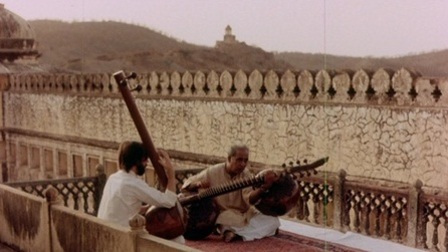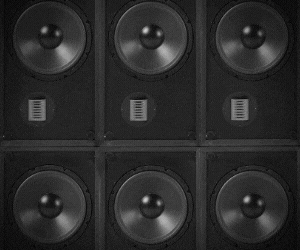It was somewhere in December last year. I went to attend Ustad Bahauddin Dagar’s ‘Rudra-Veena’ performance at the Karnatak Sangh Hall, Matunga. Notwithstanding my poor physical health that day, I made it a point to visit the venue. That was for two reasons – the stature of Dagar Sahab and a question that was lingering in mind for quite sometime then! The question concerned itself around at least a thousand year history of Indian Classical Music. I did manage to have a word with Dagar Sahab regarding it after the performance and the outcome of the conversation has made me more inquisitive about the history of Indian Music. It has made me curious about that ancient Indian Sound from where the evolution of Music could be traced. Hence the first article of this Blog is dedicated to Dhrupad.
It is generally believed that Indian Music has travelled in three principle stages. The first stage involves the ancient Indian chants – the mantras, shlokas and related chants. The second stage involves Dhrupad and the third stage involves Khyaal. The evolution of Khyaal is said to have begun with the Central Asian and Mongol invasions and subsequent migrations to India and this evolution attained a form in the Mughal period of Medieval India.
Ustad Zakir Hussain, in an interview described it as an example of fusion. Around the same developed the Tabla whose popularity as an accompanying instrument surpassed the Pakhawaj ( the accompanying instrument of the Dhrupad singing) and it still continues to hold that stature! This is a generally accepted process of Music evolution in India. My mind was full of questions regarding this process and if lucky, I wanted to discuss the same with Dagar Sahab.

Shlokas and Mantras have an abstract sound associated with them. Here I assume that they are uttered in a manner that is expected and not sung on tunes, the way we hear them today. This abstract sound is also associated with an abstract rhythm, a rhythm that despite not being organized, is constantly flowing. Something that resembles a Kaleidoscope! Before the arrival of the Seven defined notes of Music, there must have been an emphasis on these chants in order to obtain a sustenance of Sound. Ancient humans would also have collected many sounds from the forests, birds, animals and such sources.But how to sustain those sounds? Chant it out! Classical Music has sustenance but it is ultimately derived from folk sources. However sustenance of sound could have given rise to fixed frequencies and thus ‘Musical Notes’ would have come into existence. This, however, is not restricted only to India. For every civilization there are chants!
Now with the Notes in place, there should be a mechanism to give that abstract a ‘form.’ In comes the concept of rhythm! For the beats forms a boundary around the notes and the kaleidoscope attains a direction. However, this new form has significant traces of its precursor. While theshlokas and mantras have an emphasis on each syllable and the emphasis is on the continuity of the sound, the same must have got reflected in a ‘note by note’ rendition of Dhrupad! Hence there is hardly any use of a ‘phrase’ when it comes to Dhrupad performances. Not surprisingly, the element of taan is missing. The use of harkat and taan finds its use in the Khyaal form of Music that developed after the arrival of
the Muslims and before them the influences from Persia, Turkey and Central Asia in general. Musical forms like Qawwali and Ghazal also developed around that time.

So Dhrupad forms the Central-stage when it comes to evolution of Music in India. The instrument Veena gets the same importance in the Instrumental Section. All major string instruments of India where Khyaal is performed, find their influences with the Veena, for that is the instrument which, according to me, has the maximum continuity of sound. Same is the case with Pakhawaj, the percussion instrument in Dhrupad. Every syllable of Pakhawaj is grand and ensures a depth in sound at its maximum!
I lost my grandmother in the month of October last year. There were some rituals performed at home which
involved chanting of some Vedic Mantras . These thoughts developed within me while listening to those and I was lucky to have a discussion about the same with Dagar Sahab that evening. A lot of thoughts got positively verified from him as well! However that would be a separate subject involving another blog-post!
Image Credits:
https://utterjoy.wordpress.com/category/dagar-brothers/
https://mubi.com/films/dhrupad











